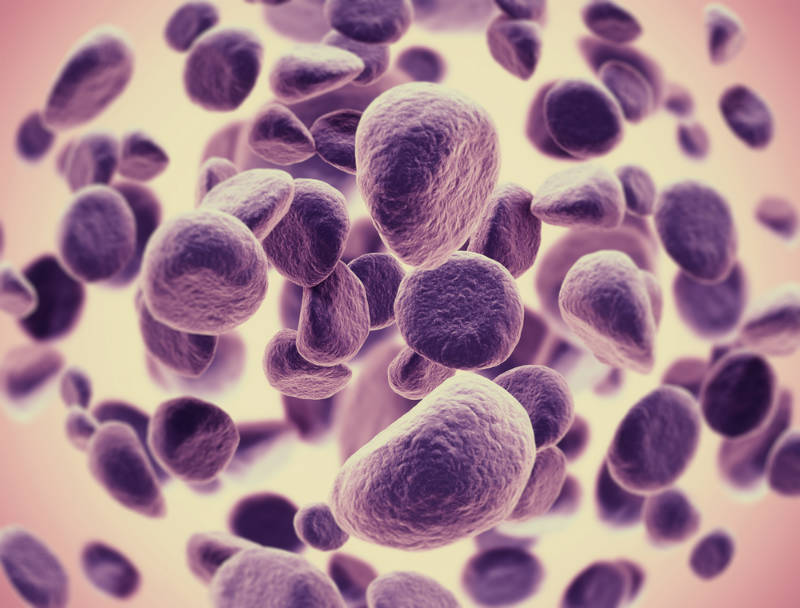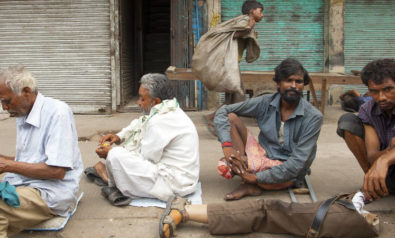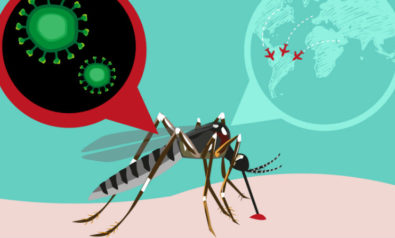In this edition of The Interview, Fair Observer talks to oncologist Vijay Reddy about developments in cancer research.
According to the World Health Organization (WHO), non-communicable diseases were responsible for nearly 70% of the 56 million deaths worldwide in 2012, with cancer claiming at least 8.2 million. Among the leading causes of cancer, including environmental and lifestyle factors, tobacco use is estimated to be responsible for over 20% of all cancer deaths. Incidence rates are almost 25% higher in men, with developing countries in Africa, Asia, and Central and Latin America accounting for 70% of global cancer deaths.
Finding a cure for cancer has been the Golden Fleece quest of modern science, with US President Barack Obama announcing a further $2 billion increase in funding for the “moon shoot” to cure cancer in his last State of the Union address. Yet drug research and development (R&D) brings enormous costs, often in the billions of dollars per drug, relaying the burden onto the consumer. Pharmaceutical companies have the highest profit margins—way ahead of the banking and oil industries—raising calls for higher transparency and accessibility to treatment.
There are successes: At the end of 2015, a 1-year-old girl with terminal leukemia responded to treatment with T-cell therapy. If she stays in remission, she will become the first person in the world to be cured of cancer using gene editing.
In this edition of The Interview, Fair Observer talks to oncologist Vijay Reddy about causes, treatments and exciting new research on cancer.
Anna Pivovarchuk: According to the WHO, there are over 30 million people living with cancer, with 14 million new cases annually. Estimates suggest that there will be a further 70% rise in the next two decades. What is behind such a drastic increase?
Vijay Reddy: One of the main reasons is that cancer is a disease associated with aging. As the average age of the global population increases, more and more people are reaching the age group where cancer happens. For example, if you look at the incidence of cancer in Africa, it was quite low, but it has been dramatically increasing, and the reason is that people are no longer dying of communicable diseases such as TB, malaria and so on. People are living longer, and that exposes them to the natural process of cellular aging, which is associated with cancer.
The second reason is exposure to carcinogens, pollutants, viruses and so on. Smoking is still the number one carcinogen. It is decreasing in Europe and [the] US, but if you look at the rest of the world—in places such as the Middle East and Asia—it is still increasing. In other places it is plateauing. Of the more than 7,000 chemicals in tobacco smoke, at least 250 are known to be harmful, including hydrogen, cyanide, carbon monoxide and ammonia. Almost 60% of all cancers are in some way related to tobacco. As the tobacco epidemic slows down, cancer rates go down about 10 years later. So, that is the reason you do not see an immediate dip in cancer even when you see a dip in smoking rates.
Tobacco or tobacco smoking does not cause lung cancer alone. Head and neck cancer is [the] number one cancer in India and [the] Asia Pacific, and is related to tobacco. In this part of the world they not only smoke, they also chew tobacco. Esophagus, larynx, mouth, throat, bladder, liver, pancreas, stomach, cervix, kidney, colon and rectum are all related to tobacco carcinogens. In addition, it is also a major cause for heart and lung diseases.
Pivovarchuk: In 2012, the most common types of cancer among men were lung, prostate, colorectal, stomach and liver cancer. Among women it was breast, colorectal, cervix, lung, stomach, which seems to indicate a strong correlation with lifestyle. Would you agree with that?
Reddy: It is lifestyle and other risk factors. For example, cervical cancer is very rare in Europe and [the] US because of cervical cancer screenings. Some 90% of cervical cancers are cause by HPV infection and is sexually transmitted. In India, Southeast Asia, cervical cancer is the number one cancer among women, ahead of even breast cancer. HPV infection also causes head and neck cancers in both men and women, and with vaccination it would be preventable.
I think HPV vaccination should become part of a global, early-childhood vaccination for both men and women because the virus is transmitted from one woman to another woman by a man. There are a lot of things that can be done to prevent. Some are happening and some are not, for multiple reasons such as politics, money, social beliefs, etc.
Pivovarchuk: The 2014 World Cancer Report found that over 60% of world’s total new cases annually occur in the developing world, and these account for 70% of the world’s cancer deaths. Is this related to poverty, lack of proper health care, or are there other factors involved as well?
Reddy: A major reason is [a] lack of screening for diseases such as breast, cervical and colon cancer. Additionally, along with population aging mentioned earlier, the exposure to toxins such as tobacco carcinogens and other pollutants is still widespread. People are living longer, but they are not necessarily rich enough, or their health care system and the infrastructure is not good enough to say that there will be mandatory colon cancer screening or breast cancer screening. They are rich enough to smoke, but they don’t have regular examinations with a physician who tells you to quit smoking. So, all this combined adds to this global epidemic. The key to decreasing cancer death rates is preventive health, and it’s also the most cost-effective option.
Pivovarchuk: What I found interesting is that both incidents and mortality rates are still overwhelmingly higher in developed countries and among men as well. Why is that?
Reddy: Anyone who is alive is going to die at some point, and the two common causes of death are cardiovascular disease and cancer. You can treat cancer and delay death but, since only a few cancers are curable when diagnosed in advanced stages, most patients are going to succumb to the disease at some point. Medicine has made important strides, and certain [types of leukemia], lymphomas and testicular cancer are curable even when diagnosed in advanced stages. Many other cancers are effectively treatable and, in some cases, curable if diagnosed in early to intermediate stages.
Interestingly, curing cancer alone may not make the overall population live significantly longer—the same risk factors also cause heart disease. What you definitely could do is delay the death from cancer, but that does not guarantee extension of someone’s life significantly, unless the cancer occurs earlier in life. Then again, what’s significant is subjective.
Cancer-related deaths in women have decreased because of mammograms and pap smears—lung cancer deaths are going down because smoking rates are going down. But basically once a cancer is diagnosed in later stages, death is inevitable. You can delay it, but you cannot prevent it.
Smoking is more common among men and, secondly, the lifestyle of men seems to be usually more [unhealthier] than women. If you look at even cardiovascular problem, obesity, diabetes and others, men tend to have an overall more [unhealthier] milieu than women.
The other thing I want to highlight is that in the WHO statistics, India overall ranks very low in the incidence of cancer, whereas China is slightly higher. The reason is not that the cancers are not happening; the reason is that the cancers are not being reported. So, a lot of the data from the non-Western countries is not fully reliable due to inadequate reporting. The patients that come into the cancer centers have their records maintained, but often the ones who go to the local hospitals, or choose to not go, are never recorded.
In such countries, the incidence would be at least several times than what is reported. For countries in Sub-Saharan Africa that lack basic services, maintaining a cancer registry is low on their priority list.
Pivovarchuk: A report I came across suggests that if all patients in need of radiotherapy in low- and medium-income countries can be given access by 2035, that would only cost about $97 billion but the potential benefits would be 27 million life years saved, and the economic benefit would be between 278 and 265 billion over the next 20 years. Is that feasible?
Reddy: I am not a public health specialist, but some of it is more common sense. We have limited resources and one needs to decide [at what] stage do you want to intervene, how much is it going to cost, and what is going to be your return on investment?
For example, radiotherapy is an expensive therapy that also requires a lot of infrastructure and highly specialized personnel to operate. Additionally, radiotherapy is generally used for intermediate and some early-stage cancers; it’s not generally used for late-stage cancer. It is a mode of surgery where you know you can’t get the tumor out fully with a knife, so you basically just burn it out with radiation.
If I had to develop a program to tackle cancer, then radiation would not be the one; it will be more focused on prevention. For example, colonoscopy has prevented so many colon cancers. You do it once in ten years. It enables you to see any malignant growths and you can take out any suspicious-looking growths straight away. It has reduced colon cancer in large numbers in western Europe. Similarly, HPV vaccination can significantly reduce cervical and head and neck cancer in Asia and Africa.
In places like Japan, where they use a lot of sushi, smoked fish, they have the highest rate of gastric cancer and they actually have regular endoscopies. Preventive screening is going to be much more cost effective in terms of the number of cancers prevented and number of life years gained. When you motivate someone for preventive screening, they are motivated in improving multiple aspects of their health, including weight management and cardiac health.
The reason is not that the cancers are not happening; the reason is that the cancers are not being reported. So, a lot of the data from the non-Western countries is not fully reliable due to inadequate reporting.
Preventive health is much better from the point of view of investment because it costs much less and it does not require sophisticated equipment and expertise, since a lot of it can be done by primary care such as HPV and HBV vaccination, pap screening, etc., which is going to be accessible in Africa, Sub-Saharan Africa, [the] Middle-East—anywhere.
Pivovarchuk: Global spending on cancer medication rose 10% in 2014 to $100 billion, up from $75 billion in 2010, with the US accounting for over 40%. How do we spread these funds more equally across the world?
Reddy: Capitalism is a driver for innovation. The whole premise for biotechs and big companies is that you create something that is valuable to the society, and the society in turn rewards you.
You set the bar and somebody else who wants to beat it has to do something much better—the consumer is the ultimate beneficiary. This will continue until two things happen.
First, there is a finite amount of dollars to spend. As more and more treatments come in, there will be a requirement that the new treatments are significantly better. Basically, the bar for success keeps getting higher and higher. This is good for the patients.
Additionally, with competition, the cost of new drugs is also going to be contained. The days when a company made a blockbuster drug and cornered the market are gone; for every successful drug, there are many more similar drugs moving into the same space, increasing competition. A prime example is the development of a blockbuster cancer immunotherapy drug that targets a protein called PD1. Initially, [it was] developed by two companies, but now every major pharma and biotech has its own PD1 antibody in development. The advancement of technology has made this possible, and this will likely result in bringing the cost of the treatment down.
Secondly, with the bar constantly increasing, at some point you are going to hit the ceiling—THE CURE. Basically, instead of a patient getting 10 expensive treatments to prolong his/her life, he/she will get one expensive but curative treatment which will also reduce the overall hospital and health care cost.
Also, look at the flipside: Yes there is a lot of cost involved but, on the other hand, I would rather have a lot of these small companies and big companies spending a lot of money on innovation and science. I say this because it allows people to get good jobs, which result in good taxes.
Remember, the US government spent nearly $3 billion on the Human Genome Project. They had a 150-times return on their investment in terms of economic activity because it created so many small companies that would do genome sequencing, genome-based cancer drug development, etc. You are spending a lot of money, but a big chunk of it is also soaking back into research and development as well as into the communities where the employees live, which in turn comes back to the government in terms of taxes. I would say that even with this high cost, the money spent on the war on cancer is money well spent—instead of money spent on real war, which is significantly higher and we have very little to show for it in return.
Pivovarchuk: Drug companies have overwhelmingly high profit margins, yet most of the big companies spend almost double of their money on marketing rather than research. Do we really need to advertise life-saving drugs? Is there a difference between investing in research and basic profiteering?
Reddy: These are good questions to ask. All my life I have been developing good new drugs, not selling them, so I don’t have all the answers. I agree, with the intense competition the marketing departments of large pharmas have also been on an overdrive. Direct marketing to patients is not common in cancer therapy, but it’s happening now. There are advertisements on television where they are telling patients to ask your doctor about this new cancer medicine. This gives false hope as, for example, an advertised new cancer drug only works in about 20% of the patients, but every patient who comes to see me in the hospital asks, “Can I get that drug, and will it work for me?” Why not?
In the past, marketing used to be only toward doctors; now it targets everybody. Direct marketing does increase unnecessary use of drugs—expensive drugs—[and] adds to the cost, which is then passed on to the society as the cost of the drug. One thing I do agree is that the R&D investment these companies make has gone up, but it has not gone up as much as their profits have gone up. There should be a direct link between the two. Limiting direct to-patient marketing will help reduce some of the cost of the drugs; limiting overall advertisement expenditure will also help.
Additionally, today we have a cycle of more and more new drugs being prescribed to patients. But new drugs do not always mean that they are significantly better; some are only marginally better than others. But then who’s is going to decide if and which marginally better drug should be covered by payers?
As drugs go off patent, the use of generics will help in reducing the prices of key drug. But mostly, the cost is because the drug companies are for-profit companies that want to do well for their shareholders. Until this is changed, the profit motive is not going to change; the society will have to decide what kind of business model it wants for pharma—one that still leads to robust innovation but does so cheaply.
Personally, I believe in the iPhone model: You make a revolutionary drug, then it speaks for itself and no advertisement is necessary (until the Samsungs of the world catch up).
Pivovarchuk: We are used to the traditional cancer treatments—chemotherapy, surgery. But there is a lot happening in cancer research that is revolutionizing the understanding and treatment of cancer. What have been the most notable recent breakthroughs?
Reddy: The two things that have revolutionized cancer therapy are the better understanding of what’s happening inside the cancer cell using genomic sequencing tools and outside—around the cancer cells, as a result of better understanding of cancer immunology. Genomic sequencing has resulted in the development of personalized medicines based on specific genetic abnormalities in patients’ cancer cells. The revolution was started by the approval of Gleevec for chronic myelogenous leukemia [CML] in 2001. Since then, there have been numerous drugs approved for melanoma, lung, kidney, thyroid and other cancers.
In the last three-four years, cancer immunology has come of age. Until about five-six years ago, people have been trying to develop cancer vaccines the same way they used to develop vaccine for viruses and bacteria. Unfortunately, this approach was bound to fail, as the human cell is a billion years more advanced than a bacteria or virus. With improvement in cancer immunology, we better understand how cancer cells hides from the body’s immune cells, [and] newer vaccine approaches take this into consideration. We now don’t just press on the accelerator, but also take off the breaks of the immune cells to make them more active.
 In the last five-six years the clinical advancement has been in trying to remove the breaks of the immune cells; these therapies are called checkpoint inhibitors. The anti-PD1, anti-CTLA 4 antibodies are two such breaks against which we have many new drugs. These therapies have been very active in 20-30% of the patients, [helping] them live longer with minimal side effects. Research is ongoing to target other breaks to help other patients. President Jimmy Carter, who was diagnosed with advanced melanoma, is in remission thanks to an anti-PD1 antibody therapy.
In the last five-six years the clinical advancement has been in trying to remove the breaks of the immune cells; these therapies are called checkpoint inhibitors. The anti-PD1, anti-CTLA 4 antibodies are two such breaks against which we have many new drugs. These therapies have been very active in 20-30% of the patients, [helping] them live longer with minimal side effects. Research is ongoing to target other breaks to help other patients. President Jimmy Carter, who was diagnosed with advanced melanoma, is in remission thanks to an anti-PD1 antibody therapy.
Removing breaks does not work in all cases—it only works where there are T-cells that are being held back by these breaks. So, what do you do when there are [no] good T-cell[s] against the cancer? Well, you make them. A new development in the last one-two years is to genetically engineer a regular T-cell (ex T-cell against flu virus) to recognize and attack cancer cells. These are called CAR T-cells (chimeric antigen receptor).
All this research has been going on for decades, but it has come into prime time only now. This treatment involves taking the T-cells out of your blood, putting a receptor that is specific to your lymphoma, leukemia or other cancer, then growing these T-cells in the lab and then infusing them; now suddenly your body has T-cells that recognize cancer cells and attack them.
These therapies have been very exciting—the complete response rate has been anywhere between 70% to 90% in leukemias and lymphomas that have failed every other treatment, and that is huge. These are complex treatments, specially made for every patient, [and] have serious but transient side effects and are currently being done at only very specialized centers. In my opinion, the engineering has just begun, and we are likely to build masterpieces in the next decade.
Pivovarchuk: What is the difference between T-cell therapy, which we saw used in Britain, and CRISPR technology, which has not passed ethical approval?
Reddy: The T-cell therapy we saw in Britain is the CAR T-cell therapy I described earlier. CRISPR technology is a technology that is used to cut DNA and insert specific genes with very high precision. Other tools that are used to insert new genes use viruses similar to HIV (but inactivated), but these insert genes randomly and in an unpredictable manner. Sometimes, these random insertions in certain stem cells can lead to cancer and other problems. So having a precise tool is very useful.
CRISPR technology is new, but it is already being used in food crops, animals and for developing new cancer treatments. CRISPR technology can be used to specifically target and cut/edit certain genes; it is being used to develop CAR T-cells that do not use a virus, but CRISPR technology to insert the gene for re-directing the T-cell. Other applications include developing universal T-cells, which involves removing genes that makes the T-cells—in effect you are making it a stealth [cell] so it is not rejected.
You will hear a lot about many new applications for this technology in the coming year. But there are two sides to a coin: This same technology can be used to cut and edit normal genes. The technology was approved recently to study early stages of human embryo development. This can help solve some of the problems of infertility as well as treat certain genetic diseases, but the controversy is we now have the tools to make designer babies if it’s unregulated.
People are also afraid about this technology being used in plants—will this stay in the food and when we ingest cause problems; will it stay in our body, be transmitted, etc.? Many of these concerns are probably overblown. Like everything else we eat, including a lot of similar enzymes that are present in various plant and animal cells, this will get digested and should not cause any problems.
Like with every new technology, there is a potential for misuse. But you can’t say that we are not going to develop this technology if it’s going to be misused. Ultimately, it is going to be the society’s responsibility to decide what we are going to do with this technology.
Pivovarchuk: There are so many different studies there that suggest all these different things about how to prevent cancer, with some showing the widely-accepted “good things” like vitamins potentially being harmful. How does someone who cares about his or her health make sense of it?
Reddy: It’s very simple. Think about the human body and human evolution, and just follow those principles. The human body was never designed to get loaded up on high doses of vitamin. These are supposed to be micronutrients. There have been studies to see whether high doses of Vitamin A or Vitamin E are going to be helpful. Studies in men showed that Vitamin E and selenium does not help prevent prostate cancer and may even increase the risk of prostate cancer. Vitamin A supplements can potentially increase risk of lung cancer. Vitamins are, in general, something you require in small amounts. Think about it like spices in your curry—you only need a small amount to make it flavorful; if you have too much, it doesn’t taste good.
With a normal healthy diet, most people can get enough vitamins and minerals. If your diet is not balanced, then you will become deficient. If you think that your daily diet does not have enough vitamins necessary for the proper functioning of the body, then my recommendation would be that take any one multi-vitamin tablet—of any brand—and it should be fine. If you take excessive amounts of Vitamin B and C, your body does not retain it; whereas the other vitamins are stored and it can cause serious harm.
The other way in which you can reduce chances of getting cancer is through healthy lifestyle. Obesity, for example, may cause cardiovascular problems, and there is also a link between breast cancer and obesity. Exposing yourself to toxins such as excess of alcohol and tobacco, a promiscuous lifestyle, having more sexually transmitted diseases, all need to be controlled.
The next frontier of research is going to be extending life [by] preventing aging or the ill effects of aging, including cancer. Basically, make you live longer and live a healthy life.
The views expressed in this article are the author’s own and do not necessarily reflect Fair Observer’s editorial policy.
Photo Credit: Deliverance / Jezper / Nir Levy / Petarg / Shutterstock.com
 We bring you perspectives from around the world. Help us to inform and educate. Your donation is tax-deductible. Join over 400 people to become a donor or you could choose to be a sponsor.
We bring you perspectives from around the world. Help us to inform and educate. Your donation is tax-deductible. Join over 400 people to become a donor or you could choose to be a sponsor.
Support Fair Observer
We rely on your support for our independence, diversity and quality.
For more than 10 years, Fair Observer has been free, fair and independent. No billionaire owns us, no advertisers control us. We are a reader-supported nonprofit. Unlike many other publications, we keep our content free for readers regardless of where they live or whether they can afford to pay. We have no paywalls and no ads.
In the post-truth era of fake news, echo chambers and filter bubbles, we publish a plurality of perspectives from around the world. Anyone can publish with us, but everyone goes through a rigorous editorial process. So, you get fact-checked, well-reasoned content instead of noise.
We publish 2,500+ voices from 90+ countries. We also conduct education and training programs
on subjects ranging from digital media and journalism to writing and critical thinking. This
doesn’t come cheap. Servers, editors, trainers and web developers cost
money.
Please consider supporting us on a regular basis as a recurring donor or a
sustaining member.
Will you support FO’s journalism?
We rely on your support for our independence, diversity and quality.





















